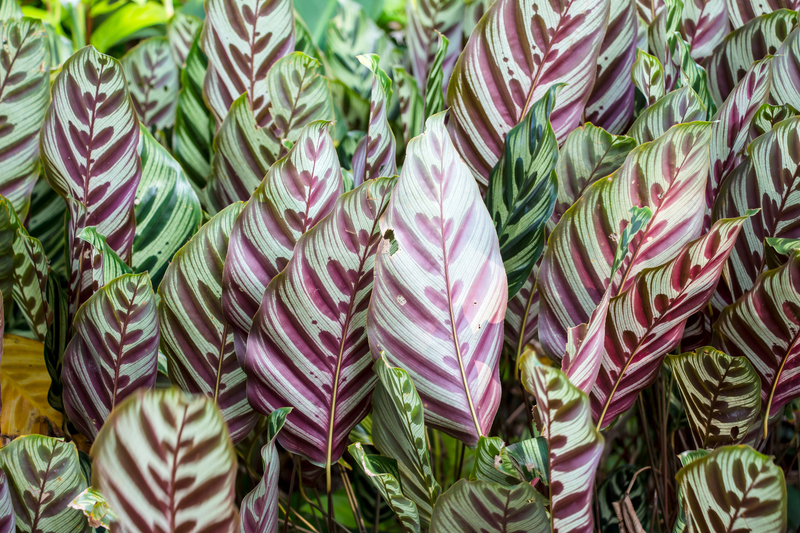Must-Know Lawn Care Tips for Beginners Who Want That Perfect Green Carpet
Dreaming of a lush, emerald-green lawn that's the envy of your neighbors? Achieving that desired perfect green carpet isn't just a matter of luck or climate; it comes down to knowledge, effort, and a few essential tips. Whether you've just moved into a new home or want to rejuvenate a tired, patchy yard, this comprehensive guide will teach you the must-know lawn care secrets every beginner needs to succeed.
Why Lawn Care Matters
Your lawn is more than just a green surface around your home. It enhances curb appeal, supports the local ecosystem, and provides a soft surface for play and relaxation. With proper care, your lawn becomes a living showcase of your home's personality and a peaceful oasis for you and your family.

Understanding Your Lawn: Grass Types and Conditions
Before starting your lawn care journey, you need to understand the basics. Different grass species have varying requirements for sunlight, water, and soil conditions. Selecting the right kind of grass and learning its needs is crucial for achieving that perfect green carpet look.
Common Lawn Grass Types
- Cool-Season Grasses: Ryegrass, Fescue, Kentucky Bluegrass - ideal for northern climates and thrive in spring and fall.
- Warm-Season Grasses: Bermuda, Zoysia, St. Augustine - better for southern regions and hottest months.
- Shade-Tolerant Varieties: Some Fescues and Zoysia blends are good for areas with limited sunlight.
Testing Your Soil: The Foundation of a Green Lawn
Healthy soil is key. Test your soil with a DIY kit or through a local extension office. You'll learn the pH and nutrient levels, which allows you to:
- Add lime if the soil is too acidic
- Apply sulfur if the soil is too alkaline
- Correct nutrient deficiencies for improved growth
Essential Lawn Care Tips for a Perfect Green Lawn
1. Mowing Matters: Right Height and Frequency
Mowing is more than keeping grass short. The height at which you mow affects the health and color of your lawn. Follow these rules for the best outcomes:
- Never cut more than one-third of the blade height in a single mowing session.
- Cool-season grasses: Keep between 2.5 - 4 inches tall.
- Warm-season grasses: 1 - 2.5 inches is generally ideal.
- Mow with a sharp blade to avoid tearing and brown tips.
- Vary your mowing pattern to prevent soil compaction.
A thick, healthy lawn begins with proper mowing!
2. Watering Wisely
Water deeply, not often. Shallow watering leads to weak roots. To promote healthy, green growth:
- Give your lawn 1 to 1.5 inches of water per week, ideally in the early morning.
- Water less frequently, but soak deeply to train roots to grow down for moisture.
- Use a rain gauge or empty can to measure sprinkler output.
- Don't overwater -- this leads to disease and poor root development.
- Water less in cool weather, and more during dry, hot spells.
3. Feed for a Perfect Green Carpet: Lawn Fertilization
Fertilization provides essential nutrients for strong, vibrant grass. Here's how to do it right:
- Test soil before fertilizing--add only as much as your lawn needs based on the results.
- Use a balanced lawn fertilizer with nitrogen, phosphorus, and potassium (look for N-P-K ratios on bags).
- Apply in early spring and fall for cool-season grass; late spring and summer for warm-season types.
- Don't over-fertilize! This can burn your grass and harm the environment.
- Follow package instructions and use a broadcast spreader for even coverage.
4. Aerate for Air and Water Flow
Over time, soil compacts under foot traffic and mower wheels. Compaction stifles root growth and suffocates your grass. Aeration opens up pathways for air, water, and nutrients:
- Use a core aerator (rental or professional service) once per year, ideally in spring or fall.
- Focus on high-traffic areas for best results.
- Follow with overseeding and fertilization to boost thick, green growth.
5. Master Weed and Pest Management
Weeds, grubs, and pests compete for nutrients and damage your dream lawn. Here's how to keep them under control:
- Apply a pre-emergent weed killer in early spring to prevent crabgrass and other annual weeds.
- Use spot treatments or hand-pull for dandelions, clover, and visible weeds.
- Check for yellow patches, which can signal pests like grubs; treat with the appropriate product.
- Healthy, thick turf naturally chokes out most weeds--focus on overall lawn health first.
6. Overseeding and Reseeding for a Lush Lawn
Thin, worn-out lawns benefit from overseeding, which improves density and color. Here's how:
- Mow and rake lawn to remove thatch and debris.
- Spread high-quality grass seed, preferably one that matches or improves your existing grass.
- Keep soil moist until seedlings are established.
- Fertilize lightly and avoid heavy traffic during seedling growth.
Reseeding bare patches is a quick way to restore your perfect green carpet!
7. Mulching and Grasscycling
Mulch clippings to return nutrients to your soil and conserve moisture:
- Use a mulching mower to chop clippings finely and let them decompose on the lawn.
- Don't leave heavy clumps, as they can smother grass.
- This reduces the need for synthetic fertilizer and boosts soil health.
Frequently Asked Lawn Care Questions
How often should I mow my new lawn?
Mow when blades are about one third higher than the ideal height for your grass type. For most lawns, this is about once per week in peak growing season.
When is the best time to fertilize for a perfect green lawn?
- Cool-season grasses: early spring and fall
- Warm-season grasses: late spring through midsummer
Can I water in the evening?
Morning watering is always best. Evening watering can leave grass damp overnight, increasing disease risk.
Tips for Seasonal Lawn Perfection
Your lawn's needs change through the year. Adapt your care for the best green carpet effect each season.
Spring Lawn Care Tips
- Rake to remove debris and dead grass.
- Apply pre-emergent weed control.
- Aerate and apply the first round of fertilizer.
- Overseed bare patches for thick, new growth.
Summer Lawn Care Suggestions
- Water deeply during early morning hours.
- Raise mower height to prevent drought stress.
- Monitor for pests and treat as necessary.
- Avoid fertilizing in peak heat, as this can scorch your lawn.
Fall Lawn Maintenance Advice
- Seed and fertilize for robust root growth before winter.
- Rake leaves promptly to avoid smothering grass.
- Aerate your lawn to reduce compaction from summer activity.
Winter Lawn Preparation
- Cut grass one last time at a lower setting.
- Avoid heavy traffic when the lawn is dormant.
- Sharpen mower blades and store equipment for spring.
Going Beyond the Basics: Pro-Level Green Lawn Tips
If you're ready to step up your game, try these advanced lawn care strategies:
- Try soil amendments like compost or organic matter to build richer soil and healthier grass.
- Install edging for a crisp, professional appearance and to keep grass out of flowerbeds.
- Practice lawn striping with your mower for that "golf course" look.
- Install a smart sprinkler system for tailored watering routines.

Key Takeaways: The Path to a Perfect Green Carpet Lawn
- Choose the right grass species for your region and sunlight needs.
- Test and improve your soil before planting or fertilizing.
- Mow, water, and fertilize according to grass type and season.
- Aerate and overseed as needed for density and color.
- Control weeds and pests to protect your green investment.
- Consistency is key--lawn care is a year-round commitment!
Conclusion: Start Your Lawn Care Journey Today!
Building a perfect green lawn takes time and a bit of patience, but every effort pays off when you relax on a soft, vibrant lawn you can be proud of. With these must-know lawn care tips for beginners, you're set to transform your yard into that sought-after green carpet. Remember, the best lawns aren't just born--they're made with knowledge, practice, and a little TLC. Happy gardening!
Want more tips? Bookmark this guide and revisit it every season to keep your lawn looking its best all year round!